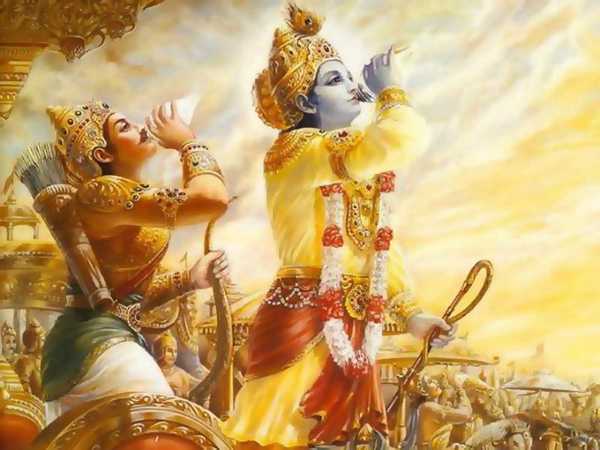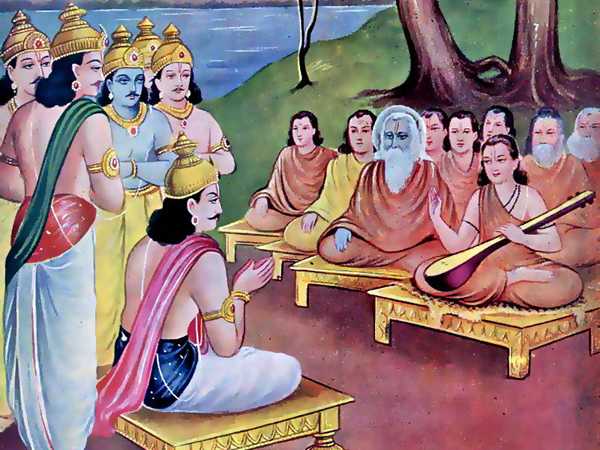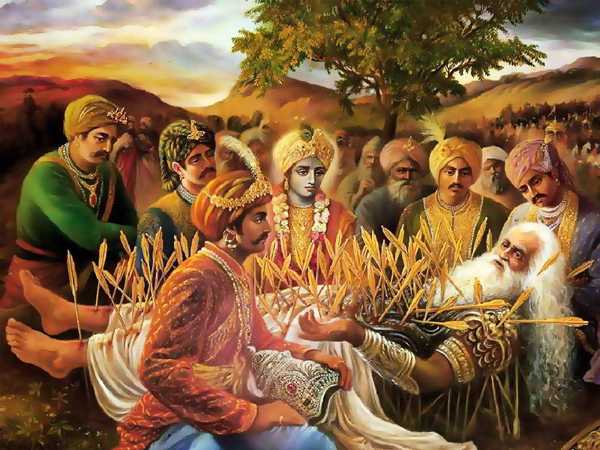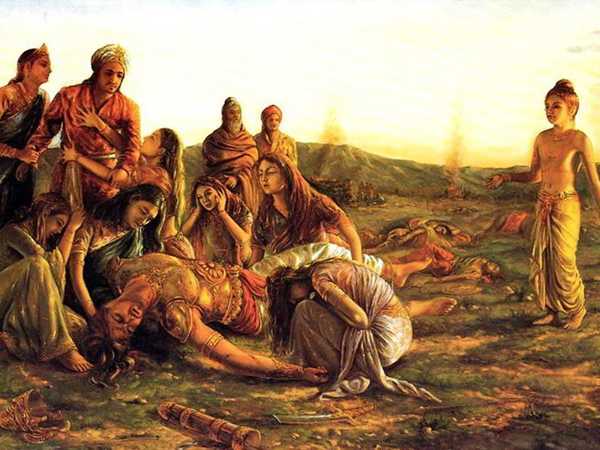Chapter 212

“The Brahmana enquired, ‘How is it that fire (vital force) in combinationwith the earthly element (matter), becomes the corporeal tenement (ofliving creatures), and how doth the vital air (the breath of life)according to the nature of its seat (the muscles and nerves) excite toaction (the corporeal frame)?’ Markandeya said, ‘This question, OYudhishthira, having been put to the Brahmana by the fowler, the latter,in reply, said to that high-minded Brahmana. (The fowler said):–Thevital spirit manifesting itself in the seat of consciousness, causes theaction of the corporeal frame. And the soul being present in both of themacts (through them). The past, the present and the future are inseparablyassociated with the soul. And it is the highest of a creature’spossessions; it is of the essence of the Supreme Spirit and we adore it.It is the animating principle of all creatures, and it is the eternalpurusha (spirit). It is great and it is the intelligence and the ego, andit is the subjective seat of the various properties of elements. Thuswhile seated here (in a corporeal frame) it is sustained in all itsrelations external or internal (to matter or mind) by the subtle etherealair called prana, and thereafter, each creature goes its own way by theaction of another subtle air called Samana. And this latter transformingitself into Apana air, and supported by the head of the stomach carriesthe refuse matter of the body, urine &c, to the kidneys and intestines.That same air is present in the three elements of effort, exertion andpower, and in that condition it is called Udana air by persons learned inphysical science, and when manifesting itself by its presence at all thejunctional points of the human system, it is known by the name Vyana. Andthe internal heat is diffused over all the tissues of our system, andsupported by these kinds of air, it transforms our food and the tissuesand the humours of our system. And by the coalition of Prana and otherairs, a reaction (combination) ensues, and the heat generated thereby isknown as the internal heat of the human system which causes the digestionof our food. The Prana and the Apana air are interposed within the Samanaand the Udana air. And the heat generated by their coalition causes thegrowth of the body (consisting of the seven substances, bones, muscles,&c). And that portion of its seat extending to as far as the rectum iscalled Apana; and from that arteries arise in the five airs Prana, &c.The Prana air, acted on by the heat strikes against the extremity of theApana region and then recoiling, it reacts on the heat. Above the navelis the region of undigested food and below it the region of digestion.And the Prana and all other airs of the system are seated in the navel.The arteries issuing from the heart run upwards and downwards, as also inoblique directions; they carry the best essence of our food, and areacted upon by the ten Prana airs. This is the way by which patient Yoginswho have overcome all difficulties, and who view things with an impartialand equal eye, with their souls seated in the brain, find the SupremeSpirit, the Prana and the Apana airs are thus present in the body of allcreatures. Know that the spirit is embodied in corporeal disguise, in theeleven allotropous conditions (of the animal system), and that thougheternal, its normal state is apparently modified by itsaccompaniments,–even like the fire purified in its pan,–eternal, yetwith its course altered by its surroundings; and that the divine thingwhich is kindred with the body is related to the latter in the same wayas a drop of water to the sleek surface of a lotus-leaf on which itrolls. Know that sattwa, rajas and tamas, are the attributes of all lifeand that life is the attribute of spirit, and that the latter again is anattribute of the Supreme Spirit. Inert, insensible matter is the seat ofthe living principle, which is active in itself and induces activity inothers. That thing by which the seven worlds are incited to action iscalled the most high by men of high spiritual insight. Thus in all theseelements, the eternal spirit does not show itself, but is perceived bythe learned in spiritual science by reason of their high and keenperception. A pure-minded person, by purification of his heart, is ableto destroy the good and evil effect of his actions and attains eternalbeatitude by the enlightenment of his inward spirit. That state of peaceand purification of heart is likened to the state of a person who in acheerful state of mind sleeps soundly, or the brilliance of a lamptrimmed by a skillful hand. Such a pure-minded person living on sparediet perceives the Supreme Spirit reflected in his own, and by practisingconcentration of mind in the evening and small hours of the night, hebeholds the Supreme Spirit which has no attributes, in the light of hisheart, shining like a dazzling lamp, and thus he attains salvation.Avarice and anger must be subdued by all means, for this act constitutesthe most sacred virtue that people can practise and is considered to bethe means by which men can cross over to the other side of this sea ofaffliction and trouble. A man must preserve his righteousness from beingovercome by the evil consequences of anger, his virtues from the effectsof pride, his learning from the effects of vanity, and his own spiritfrom illusion. Leniency is the best of virtues, and forbearance is thebest of powers, the knowledge of our spiritual nature is the best of allknowledge, and truthfulness is the best of all religious obligations. Thetelling of truth is good, and the knowledge of truth may also be good,but what conduces to the greatest good of all creatures, is known as thehighest truth. He whose actions are performed not with the object ofsecuring any reward or blessing, who has sacrificed all to therequirements of his renunciation, is a real Sannyasin and is really wise.And as communion with Brahma cannot be taught to us, even by ourspiritual preceptor,–he only giving us a clue to themystery–renunciation of the material world is called Yoga. We must notdo harm to any creature and must live in terms of amity with all, and inthis our present existence, we must not avenge ourselves on any creature.Self-abnegation, peace of mind, renunciation of hope, andequanimity,–these are the ways by which spiritual enlightenment canalways be secured; and the knowledge of self (one’s own spiritual nature)is the best of all knowledge. In this world as well as hereafter,renouncing all worldly desires and assuming a stoic indifference, whereinall suffering is at rest, people should fulfil their religious dutieswith the aid of their intelligence. The muni who desires to obtain moksha(salvation), which is very difficult to attain, must be constant inausterities, forbearing, self-restrained, and must give up that longingfondness which binds him to the things of this earth. They call these theattributes of the Supreme Spirit. The gunas (qualities or attributes)that we are conscious of, reduce themselves to agunas (non-gunas) in Him;He is not bound by anything, and is perceptible only by the expansion anddevelopment of our spiritual vision; as soon as the illusion of ignoranceis dispelled, this supreme unalloyed beatitude is attained. By foregoingthe objects of both pleasure and pain and by renouncing the feelingswhich bind him to the things of this earth, a man may attain Brahma(Supreme Spirit or salvation). O good Brahmana, I have now brieflyexplained to thee all this, as I have heard. What else dost thou wish toknow?”




